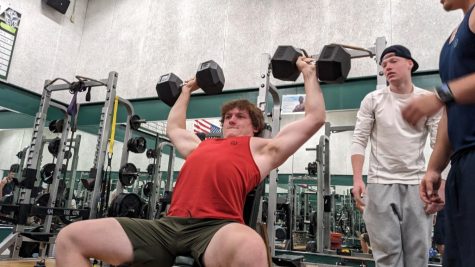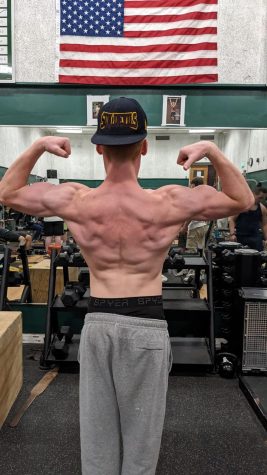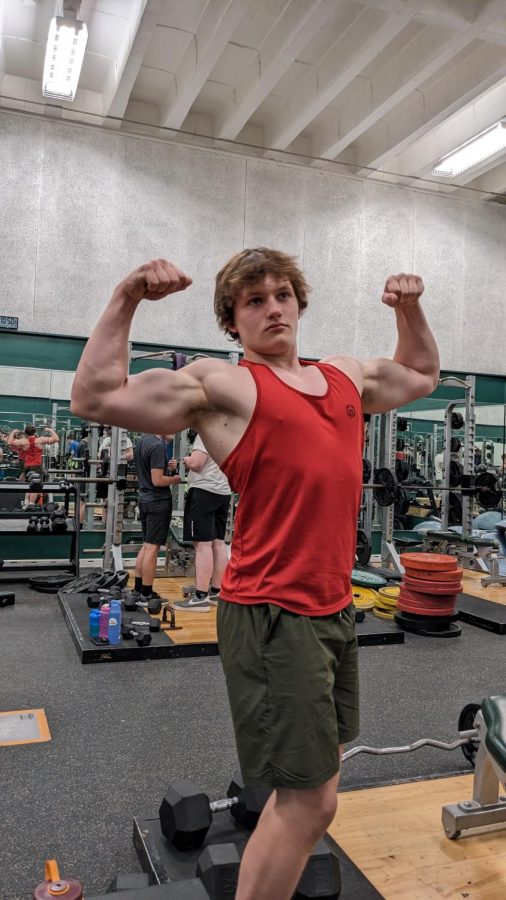Bodybuilding: The Gym Grind At IBW
June 1, 2023
For many high schoolers, class is only a fraction of the day. As able-bodied and energetic teens, students maximize their weeks with extracurricular sports, clubs, night shifts, morning shifts, volunteering, etc. It’s a lifestyle often encouraged by parents as an entrance into the hustle and bustle of the “adult world,” yet such drive can also be self-motivated for a sense of independence.
Being active outside of school satisfies a certain need that is lacking inside dull classrooms and Canvas modules. Sports and clubs provide more kinship and community to one’s interests. For students who work, it’s a financial return-on-investment more direct than the prospects formal education promises. Paired with exhaustive school work, teens are continually caught in the so-dubbed weekly “grind.”
Yet these activities can leave students mentally overwhelmed and neglect our bodily health. Despite the range of benefits these extracurriculars have, a growing number of students at Ida B. Wells High School seek physical and mental closure somewhere else: the gym.
IBW students can be found in dark mornings or after school hitting their reps in the weight room. The Southwest Community Center gym, a compact and modest space occupied mostly by retirees, is frequently cluttered with teenagers on weekday afternoons. While some are left to their own devices and airpods, others bring training partners to spot one another on a set, or to bring the energy to push out those final reps. Other athletes participate in a “Period Zero” workout session hosted in the morning within the basement weight room of the school.

A large portion of the school’s weight lifters enroll in Weight Training — a class which educates students on health benefits and exercise techniques. Max Delashmutt, a math teacher at IBW, schedules much of his workouts with the period three class. “I either work out during my prep period, which is the third period on A days, or I’ll work out after school,” he said. “So, I usually lift two or three days a week, in one of those two time slots.”
The Ida B. Wells weight room is a compact space lined with barbells, dumbbells, and weight racks. During training sessions, rap music can be heard blasting, accompanied by the clanging of plates and bars.
Working out is a regular pastime for individuals seeking bodily improvement to varying degrees. Gym-goers may seek to tone or maintain physical health, while others train in grueling intensity for bodybuilding or weight loss. Whether aerobic or anaerobic, working out can bring about a lasting peace of mind.
“It’s the best of both worlds,” said Terrence Quinn Jr., a senior at IBW. “When I started weight lifting, I was really, really, not in the best place of mind. I was really down on myself. As soon as I started weight lifting I was like ‘hey I’m looking better and feeling better!’”
The increased circulation from this activity decreases the brain’s tendency to stress. In an almost meditative effect, exercise creates a perfect environment to refresh the mind. Training until failure requires complete concentration on the movement of the body. These high intensity actions pull the mind from wandering to the present moment. Proper physical execution also includes mindful breathing, such as one exhales while pushing up the barbell.
Shankara Carson, a junior at IBW says, “Especially during the pandemic, when there were a lot of stresses, and our lives were kind of turned upside down, I turned to lifting weights and exercising as a way to ground myself and have a long term progression and goals that couldn’t be disrupted by what was going on around me.”
For lifters, mental clarity is a large part of the benefits reaped from training. Carson recalls when he had gotten sick, not being able to work out had a notable drop on his mood. Delashmutt experiences similar changes in behavior.
“I don’t know how to really explain it. It’s hard for me to end a day if I haven’t done something physically challenging,” Delashmutt says. “I just feel so much better, I sleep so much better, and it’s a good way to cope with that stress or a bad day.”
The gym craze in high school is predominantly the influence of social media on teenage impressionability. Following the decline of the pandemic, an influx of self-improvement content began trending on the internet. Meme figures such as the “gigachad” or the Patrick Bateman persona from American Psycho represented semi-ironic displays of a masculine model.
The internet has produced a large bodybuilding community with positive outcomes on the culture, including athletes being more honest about steroid use and mental health. Unfortunately, as is common with politics and news online, health content is subject to outsized claims and disinformation. In his introduction to weight lifting, Carson cites the initial draw of “10-minute ab workouts” promoted by influencers he now derides as “low-level gurus.”
Nevertheless, Carson, Quinn, and Delashmutt have all developed a sound knowledge of physical health through their own grind. Working out is a long road to success that requires total dedication and measurement.

“Just track your stuff, get a notebook or find an app on the app store to track your stuff. You’re gonna want to track your weight, what you’re eating,” says Quinn.
Terrence also recommends focusing on form and using Muscle Wiki, a website that provides different exercises for a selected muscle group.
For Carson, “learn the form and lift heavy” are two planks of advice he emphasizes. “Generally, the exercises you see people doing at a gym are gonna be good exercises, the ones you see on social media sometimes not. …Get your sets in, rest, recover, eat well, sleep well. Get yourself out there in the gym,” he said.
Delashmutt concludes, “Put in enough time to see your body change or to feel better. That way, you have a reward to associate with the kind of hard work and discomfort it takes to work out regularly.”



